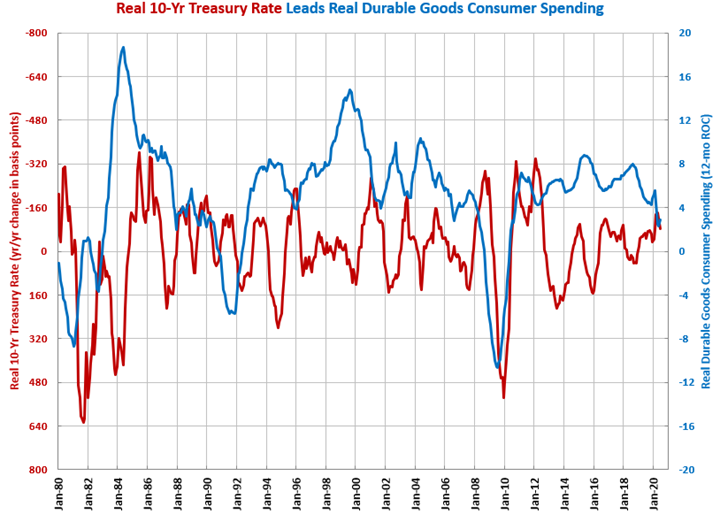Consumer Durable Goods Spending Hits All-Time High
In July, real consumer durable goods spending was $2,027,435 million, which is an all-time high and the first time real consumer durable goods spending was more than $2 trillion.
In July, real consumer durable goods spending was $2,027,435 million, which is an all-time high and the first time real consumer durable goods spending was more than $2 trillion. The month-over-month rate of growth for durable goods spending was 13.4%, which was the fastest rate of growth since February 2004. Also, it was the second straight month with faster than 11% growth.
The annual rate of growth accelerated for the second straight month to 3.6%. The real 10-year Treasury rate, which is the nominal rate minus the rate of inflation, was -0.88%. This was the seventh consecutive month and 10th of the last 12 that the real rate was negative. So far, lower interest rates combined with increased government transfer payments and the stock market at all-time highs have been enough to significantly boost durable goods spending. The question is, will that continue when government transfer payments run out?

Below are key spending categories that lead the most important manufacturing new orders and production indices.
Accelerating Growth: durable goods, electronics, food/beverage, other non-durable goods, pleasure boats
Decelerating Growth: appliances
Accelerating Contraction: air transportation services, clothing/footwear, medical care, total consumer
Decelerating Contraction: motor vehicles/parts




.JPG;width=70;height=70;mode=crop)
